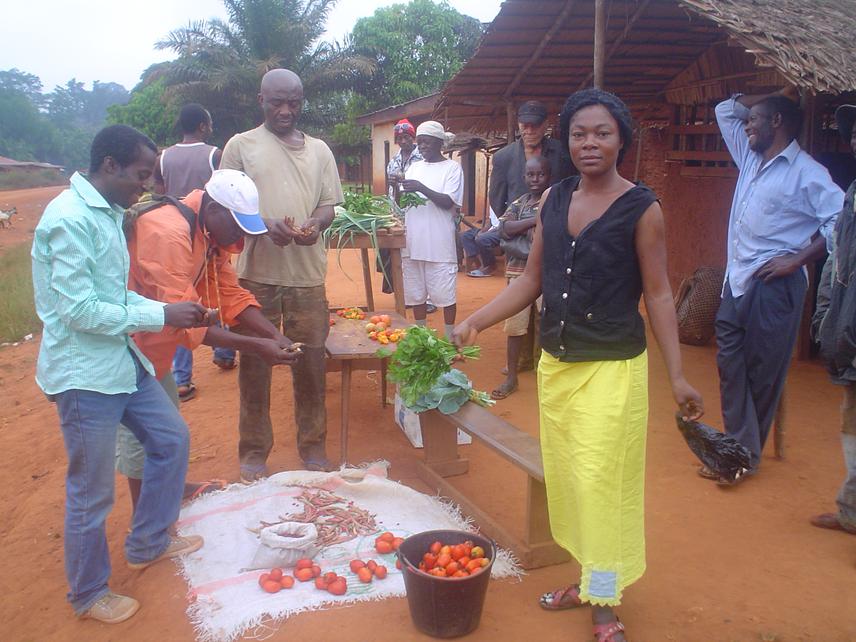Chuenu Linus Makazi
Other projects
26 Apr 2010
The Impacts of Mineral Exploitation and Associated Trade on Wildlife in the Dja-Boumba Mining Area - Southeast Cameroon
6 Feb 2012
The Impacts of Mineral Exploitation and Associated Trade on Wildlife in the Dja-Boumba Mining Area - East Cameroon
Community based ecological monitoring of bushmeat harvest and trade, analysis of the forest carrying capacity, capacity building of local communities on alternative sources of nutrients, income and awareness campaigns.
The Dja-Boumba forest supports high densities of endangered species as forest elephants, western lowland gorillas and chimpanzees. There is rapid degradation of wildlife resources caused by mining and infrastructure development. If adequate measures are not taken by the all the stakeholders in collaboration with local communities, with the support of the government, wildlife resources will be extinct and the environment degraded forever.

Marketing of various vegetables products in the villages.
Conversationalists, the Bushmeat Crisis Task Force (BCFT) and other international organisations in Cameroon are aware of potential mining operation near the Dja Biosphere Reserve (a World Heritage site) and its implications on the wildlife and habitats. The lack of appropriate mitigation poses threats to the sustainability of wildlife and biodiversity in the Dja-Boumba forest. The local communities perceived mining as a means to destroy wildlife and its habitats which is their source of livelihoods and cultural heritage. The Cameroonian government has granted exclusive rights to multiple foreign investors to explore solid minerals in the Dja-Boumba forest and this has exposed the wildlife of the area to the risk of local extinction.
This project will carry out continuous collection of community based ecological monitoring data on bushmeat harvest and trade, determine the carrying capacity of the forest (IKA of wildlife species) through reconnaissance walks and used data as indicators for measuring trend in wildlife threats and alarm will be raised when rapid changes occurs on unsustainable harvesting of wildlife in the mining area. This strategy will help for the development of a data bank for the sustainability of wildlife management and conservation of natural resources in the Dja-Boumba mining area.
Develop micro-scheme programme to improve on the small scale livelihood alternatives of nutrients and income as vegetable gardens, rearing of rabbits/ guinea pigs and the introduction of beekeeping initiative for the vulnerable minority Baka pygmies. The project will map out the levels of crops diversity, crops and domestic animals production and income generated on trimonthly basis and to provide training in book keeping which will ensure accountability and transparency.
Awareness campaign to develop knowledge, attitude and best practice towards sustainable management of wildlife amongst immigrants of the mining area and decision makers. The project will reinforce sensitisation and training of the local communities, youths, local NGOs, CBOs, women groups and other stakeholders on sustainable management of wildlife resources. Disseminate project achievements and lessons learned with local communities, civil society, and economic operators of the mining area.